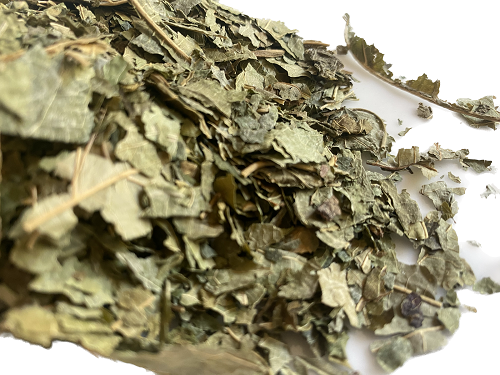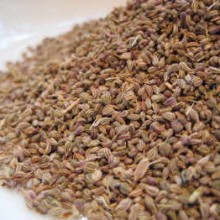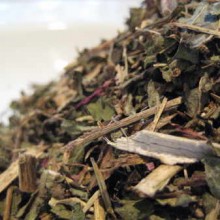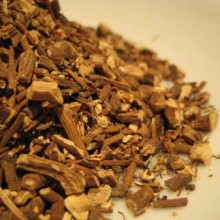The Black Mulberry Leaf (Morus nigra) is a species native to South Western Asia where its cultivation has been so long that it precedes any recorded history of it. Other species are often confused with it such as the black fruited Chinese White Mulberry (Morus alba) but it is easy to tell from the leaves of the Black Mulberry which species it is because it has a hairy lower leaf surface.
It is unusual in the plant world because it has 154 pairs ( 308 individuals) of chromosomes.
It is sometimes called the Common, Spanish or Persian Mulberry
Traditional Uses & Constituents for Black Mulberry Leaf:-
Traditionally Mulberry Leaf is used for treating the lungs, liver function and eyesight but Mulberry Leaf is rich in amino acids, vitamin C and is full of antioxidants.
The latest Chinese research has shown Mulberry Leaf is effective in regulating blood fat, balancing blood pressure, reducing blood glucose, and boosting metabolism. It is used for arterial health as result and to reduce blood sugar levels in the help to control diabetes.
A good pinch of black mulberry leaf steeped in boiled (not boiling water – let the bubbles stop first otherwise you will scald the leaf) and brewed for a few minutes is all it takes and drink thoughout the day. It is not at all unpleasant and is often used as a cordial.
Mulberry leaf is also considered a wonderful herb for anti-inflammation, anti-aging and all round maintaining health.Many people consider both the fruits and the leaves to be superfood.
It will also act, if applied both topically and taken internally, by decreasing melanin production and lightening pigmentation.
Folklore and Cultural Heritage of Black Mulberry Leaf:-
Ovid wrote in his book “Metamorphoses” about the reddish purple colouring of Mulberry fruit being due to Pyramus and Thisbee (You may know the names better from Shakespeare’s Midsummer Night’s Dream) committing suicide after a misunderstanding under a Mulberry Tree where their blood splashed the previously white fruit of the tree staining it a dark red – The Gods changed the fruits colour permanenty to honour their forbidden love.
The tree features in the nursery rhyme “Here we go round the Mulberry Bush”






